A Beverly Hills Property Once Listed for $1 Billion Just Sold for $100,000
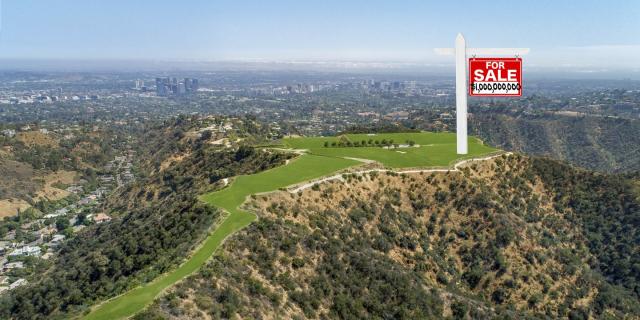
Update 8/21/2019: On August 20, the Mountain of Beverly Hills sold for $100,000 at a foreclosure auction, a mere .01 percent of its original asking price of $1 billion. In light of the news of the sale, we're revisiting the story below from our February 2019 issue, which takes an inside look at why nobody wanted to buy what was once the most expensive real estate listing in the world.
To reach the Mountain, one must go beyond Shangri-La. A quarter-mile uphill from a cul-de-sac named for the mystical utopia, there is a 30-foot-wide gate beyond which lies another place of mythic proportions: the highest-priced residential property listing in history, a 157-acre hilltop aerie with a series of sprawling, manicured fields on an escarpment rising to 1,360 feet in California’s Santa Monica Mountains with 360-degree views—and an asking price of $1 billion.
“It’s on top of the world. It’s the pinnacle of luxury, the pinnacle of Beverly Hills,” says Aaron Kirman, the broker handling the sale. “Nobody’s looking down on you. You’re looking down on everyone else.”
Indeed, from this perch above Benedict Canyon you can make out in the distance the mansion Rupert Murdoch was going to sell to Leonardo DiCaprio but instead sold to his son James in 2014, for $30 million, and just above it the undeveloped 120-acre Enchanted Hill, which was owned by the late billionaire Paul Allen and is listed at $150 million.
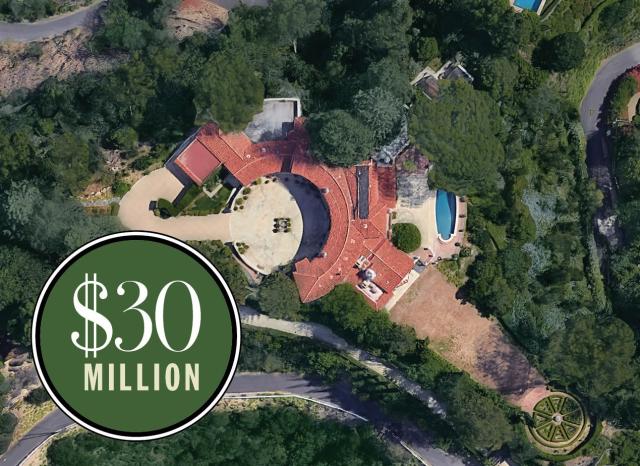
The views extend to Malibu, where Hard Rock Café co-founder Peter Morton’s oceanfront house, designed by Richard Meier, recently sold for $110 million, the most ever for a home in Los Angeles County. Closer by, there are the Bel Air estate owned by late Univision chairman Jerrold Perenchio, the priciest home listing ever in the U.S. at $245 million, and the 100,000-square-foot gigamansion built on spec and called the One that will be asking $500 million when it officially goes on the market.
“We’re above what will be the most expensive residences in the country,” Kirman says. However, the Mountain of Beverly Hills is not a residence—it is conspicuously free of buildings of any kind. “Look around: It’s immaculately landscaped. It’s green,” Kirman says. Then he points: “Look!”
A young mule deer buck ambles out from behind a hillock and onto a flat expanse of grass, creating a striking tableau. “Oh my god, that’s so pretty,” Kirman declares. “I love that.”
At present the deer is the lone resident of the Mountain, which has had many owners but no human occupants. For more than 40 years this fabled property has fueled the imaginations of grandees only to foil their plans, as foreign royals, entertainment moguls, and billionaire entrepreneurs have all failed to break ground. Now, thanks to its unprecedented price tag, the Mountain is in the spotlight as never before. Despite, or perhaps because of, that fact, this property, long a white whale, is at risk of becoming a white elephant. When the dust settles, this spectacular billion-dollar listing may remain unbuilt and available for a buck, white-tailed or otherwise.
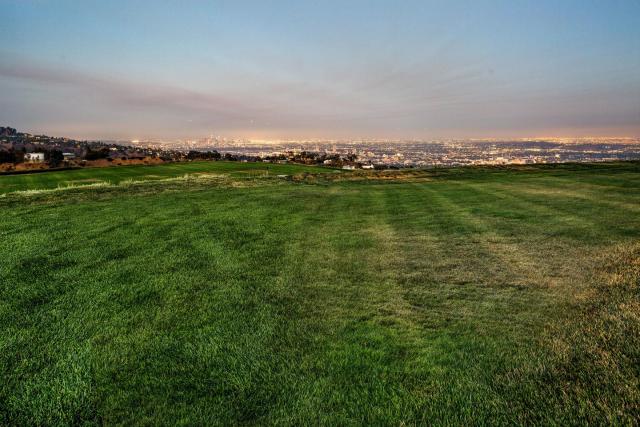
In the meantime Kirman is hunting a big-game buyer. At 41, with more than $5 billion in sales in his career, he sits atop the new guard of realtors working L.A.’s Platinum Triangle of Bel Air, Holmby Hills, and Beverly Hills. Dressed in black Rag & Bone jeans, a black tee, and a black baseball cap (emblazoned with the Aaron Kirman Partners logo), he drives a Bentley Bentayga SUV—black, naturally—as we tour the property. “The thing we’re really trying to do is get them up here,” he says of prospective buyers. “Until you see it, feel it, smell it, it doesn’t give the feeling. ”
In the three months that the Mountain has been listed, Kirman has shown it to more than a dozen interested parties. “They’ve all been in awe,” he says. “And these are people who own a lot of things—corporations, sometimes even countries—and they have been in awe.”
Where some see a glorified vacant lot, others see a glorious blank canvas. “As far as the fact that it’s dirt goes, everyone has told me that’s the reason they’re interested,” Kirman says. “They’re getting the ability to create and manifest whatever they want. And that is what wealthy people want to be able to do.”
The property is actually a patchwork of 17 lots with six residential tracts that afford the possibility of constructing up to six houses of 50,000 square feet each, a total of 300,000 square feet. Although the property could be divvied up, the owners are looking for a single buyer worth at least $5 billion. “We estimate that there are 100 buyers in the world for it,” Kirman says, adding that previously unknown ultra-high-net-worth individuals have reached out to him. “There are people who can afford it who aren’t on the books,” he says. “Sifting through that can be complicated.”
From the start Kirman has shopped the Mountain overseas, a reflection of Los Angeles’s ascendant status as a destination for the global elite. His marketing tour has included China, Singapore, Qatar, Dubai, and London.
Back at home, the billion-dollar price tag has caused an uproar among Beverly Hills brokers. The ones I interviewed called the price overblown, and several suggested it was harmful to the property’s value. One, who asked not to be named, laid the blame at Kirman’s feet: “I think he damaged the seller and damaged the property. But Aaron’s in it just for Aaron.” Kirman declined to comment about these remarks but has stated that he has his clients’ interests in mind and strenuously defends the listing price.
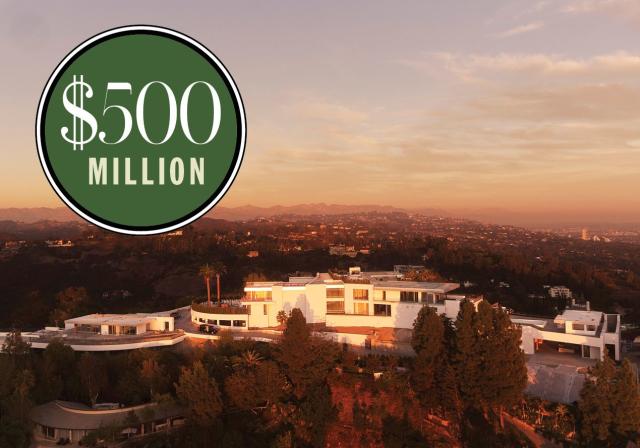
Although Kirman’s competitors may be biased, there are other observers who take issue with the billion-dollar figure as well. “The listing price is a publicity stunt, that’s all,” says Robert Mann, an attorney specializing in construction law for the ultra-wealthy who has lived in Benedict Canyon for 35 years.
However, experts and brokers all agree that the Mountain is unique and worthy of a record-setting price—for Los Angeles, the U.S., or even the world. Near the low end, Santiago Arana, managing partner at the Agency, and Stephen Shapiro, co-founder of Westside Estate Agency, suggest that the Mountain could fetch $300 million. “It’s worth more than that, no question,” says Jeff Hyland, co-founder of Hyland & Hilton, the broker for the Mountain until last summer. “My partner and I thought $500 million was the number it should be listed at.”
The owners urged Hyland to list it at $1 billion in 2015 and again early in 2018. “I told them, do not do it,” he says. “There has never been a piece of residential dirt in L.A. that has sold for more than $50 million.” Worldwide, the most expensive residential transaction to date was for the lavish Château Louis XIV in Louveciennes, France, which sold for $301 million in 2015. But none of that factored into pricing the Mountain. “The owners are market disruptors,” says Ronald Richards, attorney for the property’s owners, Secured Capital Partners LLC. “It’s a one-of-a-kind property. You don’t use comps.”
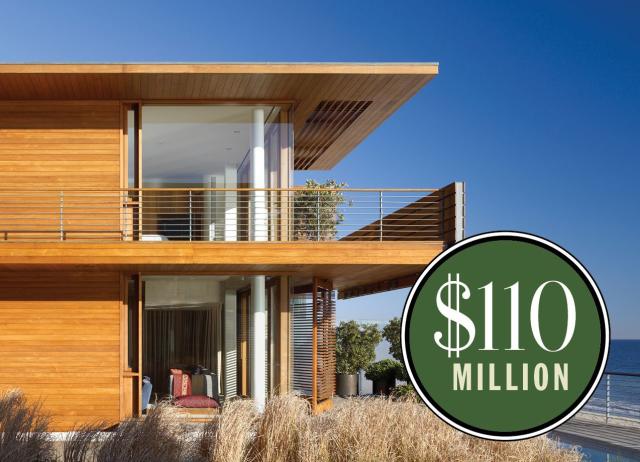
“This is a unicorn,” Kirman says. “The acreage, the site, the views, the privacy—it’s unparalleled. To try to compare, even internationally, it’s just foolish.” Still, there is a difference between asking $1 billion and getting it. Even the Mountain’s one-sheet states that the price is negotiable; the question is how much. “That’s a seller decision,” Kirman says. “What it’s going to go at, I never know. You might really get a billion dollars for this.”
If the Mountain’s value is unclear, its appeal is not. “The ultra-wealthy in California have been seeking out mountaintops for 100 years,” says David Silverman, a historian of Beverly Hills homes. “Having the bragging rights of saying it’s the largest and the highest is something people always have sought.”
The ambitious and quixotic have long been drawn to the Mountain—formerly called the Vineyard and before that simply Tower Grove Drive, the street that leads to its gate. One Hollywood power couple, the actress Mitzi Gaynor and her producer husband, Jack Bean, owned a portion of the property until the 1970s. In 1977, Princess Shams Pahlavi, older sister of the shah of Iran, acquired the current property, an assemblage of 17 lots, through proxies.
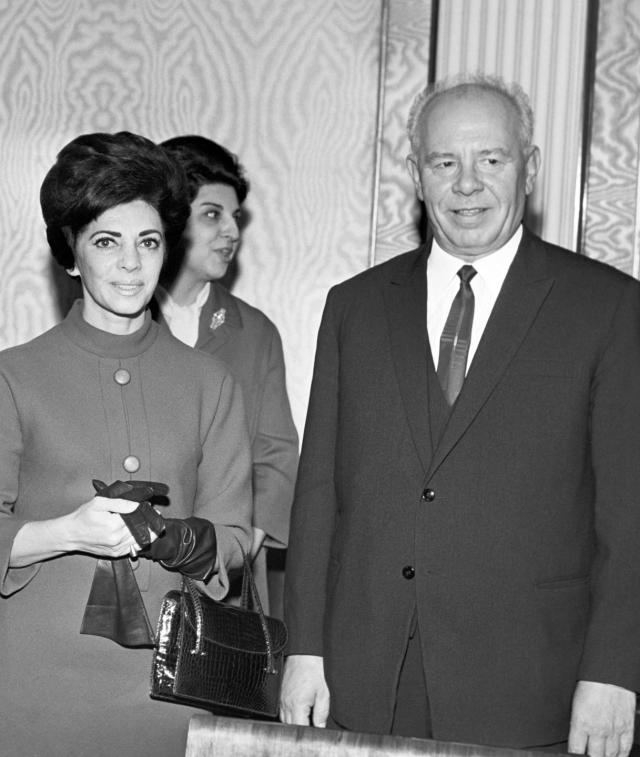
Princess Shams had a penchant for extravagant monumental projects—she enlisted architects from the Frank Lloyd Wright Foundation to build the opulent Kakh-e-Morvarid, or Pearl Palace, in Karaj, outside Tehran—and her vision was of a single plateau dominated by a single palatial mansion. One of the project’s developers claimed that it was really to be a home for the shah, though we’ll never know. Princess Shams abandoned her plans following Iran’s Islamic Revolution.
The property lay idle until TV mogul Merv Griffin snatched it up in 1987 with a single-minded goal: to outdo producer Aaron Spelling, who boasted the area’s largest house, at 56,000 square feet. Griffin had the top of the ridge lopped off, removing 27 million cubic feet of dirt, before work ground to a halt. Griffin’s interest shifted to developing other holdings, like the Beverly Hilton, and he ran afoul of the neighbors.
“He had already started to grade, and we told him that we were really upset,” says Nickie Miner, president of the Benedict Canyon Association. “He said, ‘I’ll stop. I don’t want to build anything or do anything with this property that will upset the community.’”
Griffin sold to Mark Hughes, the founder of Herbalife, in 1997 for $8.5 million, then a record for Southern California, and Hughes eagerly plowed forward with plans for a $100 million compound, with a 45,000-square-foot Mediterranean villa, a million-gallon lake, and a wildlife sanctuary. “I got a notice from the city that somebody wanted to build a 52-foot bell tower atop a grandiose structure,” Miner recalls. “I thought, That’s way taller than the ordinance.”
Residents suspected that Hughes’s building was to be for commercial use—the plans called for men’s and ladies’ rooms with 12 stalls apiece—and pushed back with a vengeance. “Everybody was very active,” Miner says. “This guy wanted to build a King of the Mountain resort for his company.” When Hughes died suddenly in 2000, his unrealized plans perished too. The property was put into a trust for his young son and later sold, becoming the subject of a series of acrimonious lawsuits.
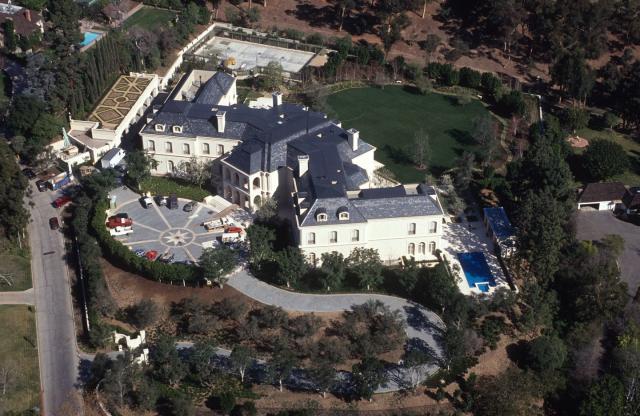
It stayed on the block, however. Brad Pitt came to see the Vineyard in 2002 but decided it was too rich for his blood. Once the Hughes trust off-loaded the Vineyard for the deeply discounted price of $23.75 million in a no-cash-down transaction to Tower Park Properties, it was shopped as individual lots. In 2007, Tom Cruise, billionaire Australian media scion James Packer, and another investor had a deal to buy four lots for $80 million. But Cruise pulled out of escrow on the last possible day, and his partners followed suit.
Several other deals fell through in quick succession. Then, in 2010, a convicted felon named Victorino Noval, who served three years for tax evasion and mail fraud, acquired a stake in Tower Park Properties. According to a 2015 report, Tower Park also received a cash infusion from a Middle Eastern royal, who later increased his holdings.
In 2016 the Mountain was transferred to the current owners, Secured Capital Partners LLC, whose general manager is Noval’s son Franco. According to Richards, Secured Capital’s lawyer, the elder Noval has no financial interest. It’s unclear, however, whether the mysterious Middle Eastern royal remains an investor or lender. (Richards declined to comment.)
Regardless, the property is burdened by debt, and observers speculate that the asking price was inflated as much to help the owners refinance as to drive PR. While the brazen billion-dollar figure has not yielded a buyer yet, it has brought headlines. “We’ve gotten almost too much media and press,” Kirman says. One serious prospective buyer was scared off, and it seems likely that others have steered clear. Meanwhile, Kirman has been flooded with bizarre calls from real estate groupies. “The property is a celebrity,” he says, “and sometimes they have stalkers.” Richards declined to comment.
For locals, the prospect of living alongside the world’s priciest residential property evokes neither pride nor prejudice. “Would it be a badge of honor? No,” Miner says. As for the buyer: “We don’t care if he’s the richest or the poorest, or where he’s from. We just want nice neighbors who respect the canyon.”
However, the Mountain, priced out of the reach of even the Hollywood elite, seems more likely to be acquired by a bad actor on the global stage. Consider that the world’s most expensive residence, Château Louis XIV, is owned by Mohammed bin Salman, the Saudi crown prince who the CIA has determined ordered the killing of journalist Jamal Khashoggi. According to Richards, the owners will sell to anybody whose funds don’t violate the rules of the U.S. Financial Industry Regulatory Authority or the Patriot Act, though, he adds, “hopefully, we won’t be faced with a buyer that is an abuser of human rights.”
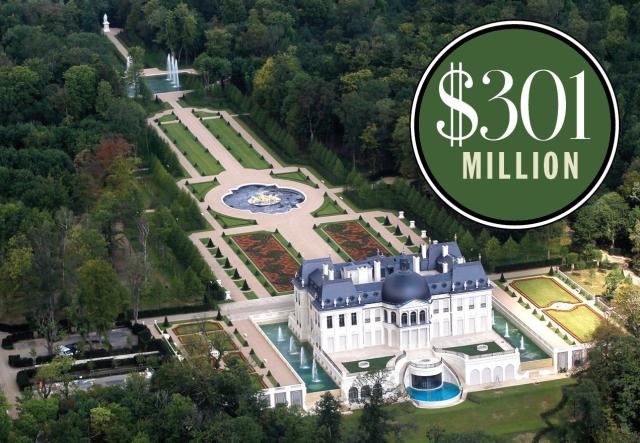
The owners are scrambling to court higher-minded plutocrats, however. In January they started marketing the Mountain as a “philanthropic kingdom,” lining up architect Richard Landry (“king of the megamansion”) to develop a site plan with an “executive house,” a “clubhouse” (with winemaking facilities), a “cultural house” (home to an art museum), a “gala house,” a “performance house,” an “entertainment house,” and a guest village consisting of four houses.
“The Mountain would become the most public gift to society,” according to the pitch. It would allow the buyer to “claim their place in history among greats like J. Paul Getty, by leaving a lasting legacy of purpose.”
All the structures—each conspicuously called a “house”—would be built as residences initially, then donated to a foundation, which could then convert them to commercial use in an attempt to skirt restrictions. “There is always a range of opinions when it comes to what is buildable,” Richards says, adding that Landry and his team had taken “creative liberties.” Ultimately, the direction of the development is “something the buyer will decide,” Richards adds. “All structures would go through due process compliant with the city.”
This proposal is certain to set off a battle with the deep-pocketed denizens of Benedict Canyon. New commercial ventures are verboten, and the rezoning process relies heavily on community input. With the help of a group called Save Our Canyon and the support of other well-heeled resident associations, the BCA has successfully blocked a proposed hotel on an estate previously owned by billionaire Kirk Kerkorian and later by Sonny Bono.
Residents will not stand for commercial development, according to Miner. “You would see a tsunami of opposition,” says Robert Mann, the local who serves as Save Our Canyon’s vice president. “This is a powerful, well-organized, well-funded, energetic community that will do everything humanly possible to resist the commercialization of Benedict Canyon.”
A development battle would be highly public and protracted, lasting years. And any plans could fall victim to time or other circumstances. The Mountain’s past owners serve as cautionary tales: “Death, political revolution, second thoughts—things that all the money in the world can’t prevent,” Silverman says. “I’d be very surprised if a buyer is able to build in their lifetime.”
The longer the Mountain lingers on the market, the more it begins to resemble an Icarus tale, with a stratospherically high, hubristic price begetting equally elevated expectations, all of which may come crashing down. The stark shift in sales tactics six months after listing the Mountain could be a recognition of that. However, the owners have no intention of taking the property off the market. “They’re committed to selling it, and now’s the time,” Kirman says. Although he sounds confident, his words are oddly cryptic. “To me there’s no value that you could put on this property. There’s just not. So nothing surprises me.”
This story appears in the February 2019 issue of Town & Country. Subscribe Now

Comments